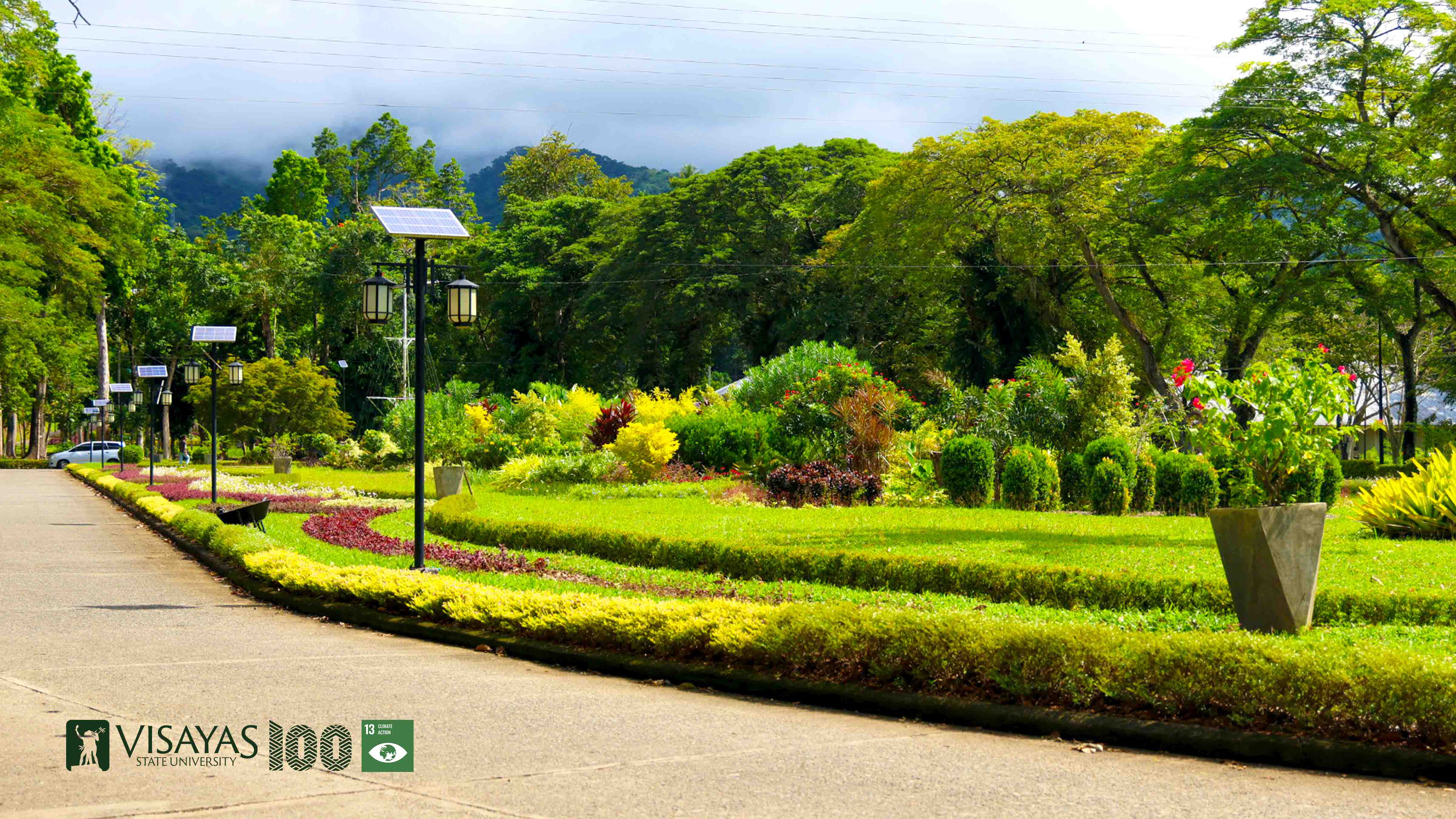VSU grows drought-tolerant garden plants to promote sustainable landscaping
- Details
- Written by Adonna Canales Nilo
-
Published: 22 November 2024

Aside from being called a “Very Scenic University,” VSU enhanced its landscapes not only to beautify the campus but also to practice sustainability by growing drought-tolerant ornamental plants.
This year, VSU flaunts its landscapes with flourishing green garden plants grown on them. These are not just any flowering plants that must be pampered with water daily. These drought-tolerant plants can survive during drought periods and are simply considered to be plants that require less water. Some are considered drought-resistant, meaning they can survive with long droughts or with no water at all.
VSU started the idea of creating xeriscape landscapes, a landscape that only needs little to no water in 2020, and it has become well-established in 2022. In an interview with the current head of the Grounds and Landscape Maintenance Unit of VSU, Mr. Roden D. Troyo of the Department of Horticulture, he mentioned drought-tolerant plants having adaptive features to water stress that enable them to survive in varying environmental conditions. The same features allow these plants to be resistant to heat and tolerate drought conditions that may affect their growth and development.
The ability of ornamental plants to tolerate high transpiration rates is a synthesis of morphological, physiological, and biochemical adaptations that capacitate them to thrive for days or weeks even with less water consumption. These features not only enhance their survival but also make them attractive choices for landscaping, especially in areas prone to limited irrigation resources.
Among the drought-tolerant plants grown in the VSU landscape are the Kamuning plant, Yellow bell plant, Acalypha, and Spider lily among others. While drought-resistant plants include bromeliads, zamia, oliva, and other cycads. These ornamental plants are visibly seen on the grounds of VSU. These showy shrubs and flowers are now lush scenery, creating a peaceful and shady atmosphere for everybody.
Another practice was the replacement of grassy lawns with drought-tolerant plants. Lawns are often considered to be high maintenance, requiring frequent watering and regular mowing, usually every week. This approach can be resource-intensive, consuming large amounts of water and fuel.
In contrast, adopting more sustainable alternatives, such as xeriscaping or using drought-tolerant plants, can significantly conserve water, reduce fuel usage, and promote biodiversity. These approaches not only lower water consumption but also contribute to healthier ecosystems and less environmental pollution.
Mr. Troyo emphasized that the immunity of these plants from drought conditions makes it favorable every summer. Between February and May, the team only watered the plants once a week. During the rainy season—from June to December—the team no longer water those plants. Instead, they mainly depend on the raindrops to drench the soil, allowing the plants to grow amazingly still.
Aside from being drought-tolerant and drought-resistant, the perenniality of the ornamental plants evident on the campus does not pay much attention and only consumes less work to maintain. They last for many years, and when trimmed, pruned, or hedged, they instead grow much healthier branches and more flourishing leaves and flowers.
People can find the splendidly grown ornamental plants at VSU Ecopark, VSU Malls, departments’ lounge areas, and alongside the roads or pathways of the school. Various ornamental plants and diverse flora habitats can be seen anywhere on the campus, wherever your eyes will set their glaze.
Advantages of planting drought-tolerant ornamental plants
As explained by Mr. Troyo, the drought-tolerant type of ornamental plant has a lot to offer aside from aesthetic value. Some of its benefits include water conservation, less maintenance, providing shade and a natural cooling effect, reduced fuel consumption, and income generation.
Water conservation. Drought-tolerant plants only require less water compared to the other types of ornamental plants. This means not only does it give your home refinement, but it also helps you lessen your water bills.
Less Maintenance. Planting drought-tolerant ornamental plants saves time, effort, and money. These plants are more resistant to pests and diseases, so you need not spend more time and money on watering, pruning, and fertilizing.
Providing Shade and a Natural Cooling Effect. It reduces the heat that penetrates your homes by creating areas for shade and provides a natural cooling effect by lowering surface and air temperature and through evapotranspiration.
Reduced Fuel Consumption. Reducing grassy lawns means a reduction in water and fuel consumption. The high cost of maintaining lawns includes expenses for fertilizer, pesticides, equipment, fuels, and labor.
Income Generating. In 2022, the Department of Agriculture (DA) considered ornamental plants as one of the high-value crops of the country. DA encourages the growing of these plants, for they have high potential benefits in the market. The exportation of these products to different parts of the world, including Japan, the United States, and Australia, has been increasing. More and more agencies are purchasing these types of plants, making them a good source of income for people.
Mr. Troyo motivates everyone to start growing ornamental plants, even just in their simple homes. As a tip, he added that propagating the plants on your own rather than buying a lot in a single time will help you cost less. Moreover, he heartened the youth to possess an entrepreneurial mind that prioritizes the widening of the field of ornamental industry.
[Fact-checked by Dr. Roden D. Troyo]
This article aligns with Sustainable Development Goal No: 13 (Climate Action).

